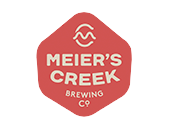Managing brewery distribution is vital to sales and sales growth for all breweries. If brewery distribution is not managed strategically, it can be the downfall of the business. Successful distribution management uses past information, sales techniques, and future forecasts to maintain sales and keep shelves full. Using optimized beverage distribution software can make successful brewery distribution management possible.
The three-tier framework of brewery distribution is not ideal for all craft breweries, some of which want to self-distribute or engage in a mix of self-distribution and outside distribution.
Depending on state regulations, a brewery may be able to manage a taproom, self-distribute, and use an outside distributor. The array of avenues for alcohol sales underscores the significance of exceptionally managing brewery distribution, an indispensable cornerstone of overall brewery success.
Complying with Brewery Distribution Regulations
There are thousands of federal and state regulations impacting the U.S. beer supply, but states regulate distribution. The least regulated states include South Dakota and Idaho, while the most heavily regulated states are California and Texas. Heavy regulation can be a barrier to entry for emerging craft breweries, and managing operations to comply with those regulations while implementing the most effective distribution methods is vital to business success.
Understanding your state’s regulation of alcohol distribution starts by understanding the basics, such as whether your state is a control state or an open state. Seventeen control states enact control over beer distribution, and the rest allow private entities to handle distribution.
Alcohol Beverage Control (ABC) Boards may prohibit or limit self-distribution. Retailers are also regulated in regard to whether customers must consume the alcohol on or off the premises.
There are two approaches to managing brewery distribution regulations. One is to design production around regulations through micromanagement and a focus on the law. This can lead to less regulatory problems, but it can also cause breweries to lose sight of business goals and the goals of the regulations themselves.
A preferred method for managing brewery distribution in lieu of regulations is to delineate the goals of the law and the outcomes that should occur as a result of those laws. For example, the goals in production laws may be to produce a safe, ingestible product. Focusing on this rather than the specific verbiage of a law makes it less tedious, and it tends to get most of the brewery’s regulatory boxes checked.
There are obvious specific regulatory measures that must be met in order to ensure the brewery is compliant. However, stepping back and looking at the goals of these measures is often an easier method to get overarching compliance, while complex specifics can be honed following the achievement of the overarching regulatory goals. Only specific measures will get you past an FDA or ABC inspection, but taking a macro view and considering the goals of regulation simplifies the process to compliance and improves the quality of compliance actions.
Regulation does impact brewery distribution management because tracking production and inventory is the only way to effectively track information and stay on top of the data—such as whether you are going to be within the thresholds set for self-distribution. Brewery management software can give you all of the data needed to manage distribution, so the brewery can breeze through inspections.
Managing a Brewery Distribution Strategy
The first step in selecting a brewery distribution strategy is to consider the cost of distribution. The highest profit margins are available in the taproom, but there isn’t enough demand in a small taproom to consume all of the supply. Distribution of some sort is necessary, and new breweries often choose self-distribution to maximize profits.
Selling beer to wholesalers scales operations and enlists another entity in sales, marketing, and delivery. Outside distributors can generally get the beer out there more efficiently than the brewery, but this service comes at a cost. Proper accounting is vital to successful distribution because there’s a lower threshold for errors and profit when employing outside distributors.
Self-distribution cuts out the middleman in a way. However, you still need drivers, trucks, and salespeople to go negotiate sales and promote the beer in bars and restaurants. The brewery maintains quality control but at the same time adds another ‘iron in the fire.’ In other words, brewery operations become more complex.
Ultimately, selecting a brewery distribution strategy is a numbers game. You have to know your revenue per barrel, gross margin per barrel, and EBITDA per barrel to strategically optimize profits. Taprooms are almost always a win if allowed within the state, and self-distributing can be more profitable if the brewery can deliver locally for less. When all distribution options are allowed, they can be optimized based on numbers to get the best outcomes.
Having software that puts production, distribution, and financial numbers at your fingertips optimizes brewery distribution management.
Understanding Distribution Contracts
Once brewery decision-makers have figured out the financial differences between self-distribution and outside distribution, there are many differences that should play a role in choosing one or more companies. Most of those details come in the form of a contract.
As contracts should benefit both parties, the brewery and the distributor will each have to adhere to some contractual obligations. In general, the brewery makes production and exclusivity agreements indicating that they will produce a certain type and number of SKUs, and the distributor will have the exclusive right to distribute that SKU for the length of the contract. This may be an indefinite time period.
Distribution contracts are a huge part of managing brewery distribution because of the number of contracts that may be developed for one brewery and multiple distributors. These contracts must be easy-to-access and accounted for in brewery software in order to avoid breeches, address struggling contracts, and develop new contracts. The right brewery management software will provide the data needed to understand whether distribution contracts are successful.
Managing Distribution from the Past, Present, and Future
Distribution is about looking at past and present data alongside future forecasts to develop a distribution strategy that will be profitable. It means getting as much information as possible through your software system and through communication with key players from your team so that you can make informed, data-driven decisions to manage the entire distribution process and grow your company.
Looking at the past involves looking at the positive and negative sales numbers for previous months. Are certain products not selling as they should? Are there any surprises in new brew sales or some that didn’t take off? In addition to comprehensive data records, decision-makers should gather qualitative information from delivery drivers and sales reps. Bartenders and merchandisers may also have useful information.
Once you have reviewed past information, breweries must consider what they are currently capable of. Is production meeting demand? Are there any productions that are costing the company too much? What are the current sales strategies for getting beer to the consumer?
Finally, strategic decisions should be made about the future using those data-driven forecasts. Brewery management software can provide forecasting, so the brewery can make informed decisions and mitigate risky endeavors.
Related: Why You Need to Move Beyond a Brewery Accounting Spreadsheet and How to Do It
How Breweries Can Succeed with Effective Distribution Management
If a brewery wants to scale its production, it will likely have to hire multiple distributors. While distributors have the resources to expand reach and increase sales, they can also fall short of the brewery’s needs.
It is difficult to end a distribution contract, which is why most established breweries have relationships with multiple distributors to ensure a healthy mix of locations, restaurants, bars, and other sales venues.
Many breweries optimize the benefits of each form of distribution they’re able to take advantage of: outside distribution, self-distribution, and taprooms. They have a local taproom, self-distribute some beer brands nearby, and leave regional distribution to larger distributors. This allows the brewery to maintain some control of local distribution while using the advantages large distributors have to offer.
The Role of Relationships in Brewery Distribution
Aside from the numbers and controlling the logistics of how a certain beer product gets to the consumer, managing brewery distribution is about relationships. The relationship between a producer and distributor, whether outside or in-house, can impact how the beer is received in retail establishments.
The process is about logistics and delivery, but it’s also about salesmanship. A good distribution strategy involves people and companies that represent the brand well and can communicate and sell that brand to bartenders, purchasers, and consumers when necessary. Brewery distribution is a numbers game, but those numbers are impacted by the quality of relationships and integrity of the distributor.
Related: FAQs for Brewery Production Planning
Optimize Your Brewery Distribution Management with the Right Technology
Once a brewery distribution strategy takes shape, the focus can shift back to the core of operations—brewing itself. The pivotal question arises: Can the brewery effectively manage demand while upholding product consistency?
An overly ambitious distribution approach could inadvertently mar the reputation of the brewery, casting doubts on its ability to meet expectations. During the process of developing a distribution strategy, technology emerges as the driving force that can optimize production, streamline distribution logistics, and ultimately bolster profits.
Effective brewery distribution is complex even when delegated to an external distributor, as the brewery’s involvement remains pivotal in creating marketing campaigns and maintaining stringent quality control. In instances where breweries opt for self-distribution, using specialized brewery software becomes essential for accurate and effective processes.
Brewery software assumes a multifaceted role by bolstering quality control, streamlining logistics, and enhancing data-driven forecasting capabilities. Its versatile functionality encompasses contract management, route optimization, and order fulfillment. Moreover, it acts as an overseer of legal compliance, regulations, and contractual commitments, infusing these considerations into the heart of strategic decision-making.
Using the right platform can also make your existing team more efficient. By leveraging a digital sales sheet, viewing real time inventory, and seeing what products are available for pre-order, your strongest accounts can leverage technology and get even stronger. An ordering platform like Ekos Order Hub can give your sales reps more time to find new accounts instead of taking orders for existing ones.
For breweries embarking on the path of self-distribution—be it a partial or comprehensive endeavor—Ekos’ software emerges as an excellent choice. By simplifying distribution management and furnishing invaluable insights, Ekos empowers businesses to sustain and nourish their growth trajectory. Reach out today to schedule a personalized 20-minute demonstration and discover the transformative potential that Ekos holds for your brewery enterprise.





